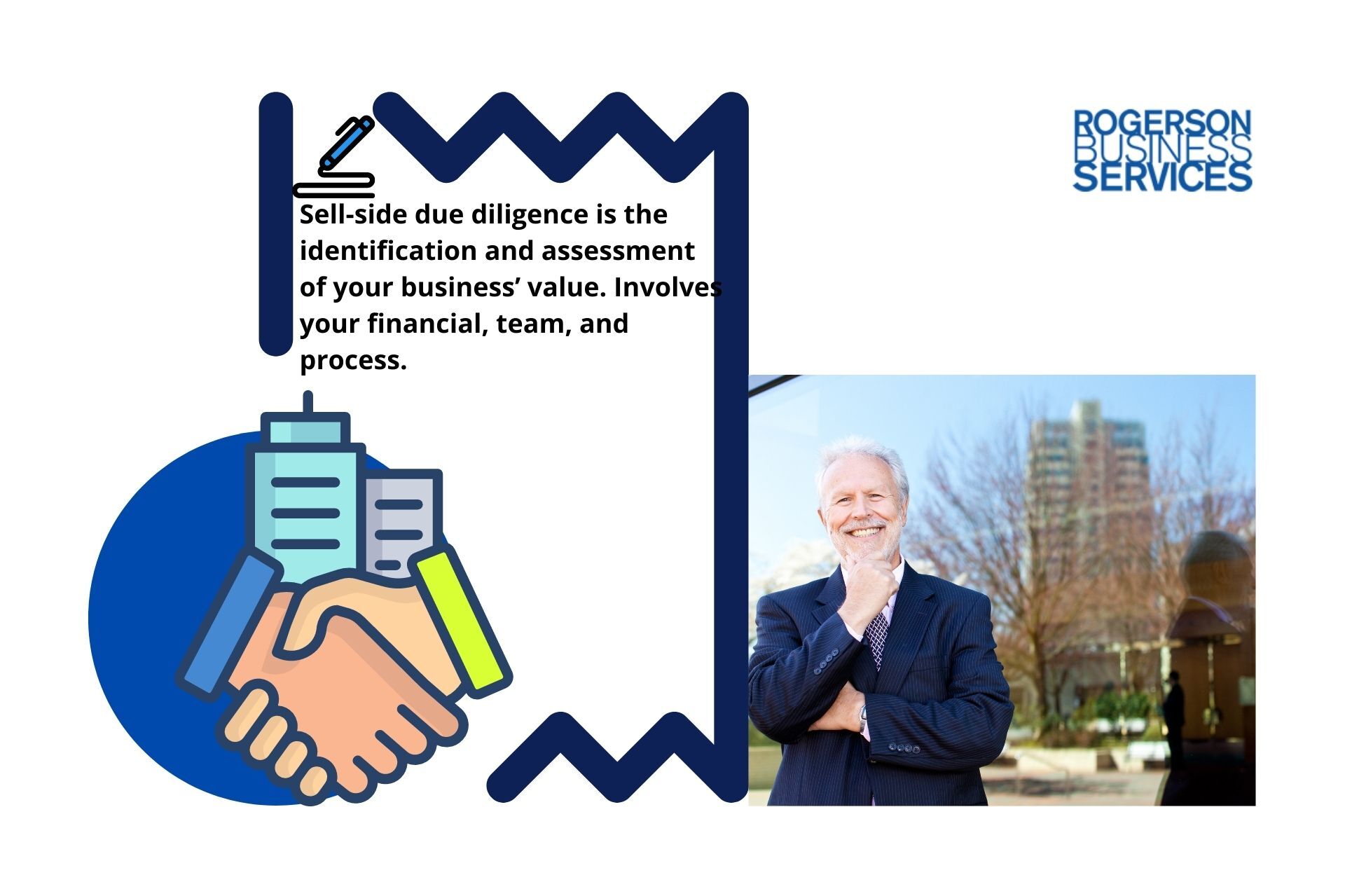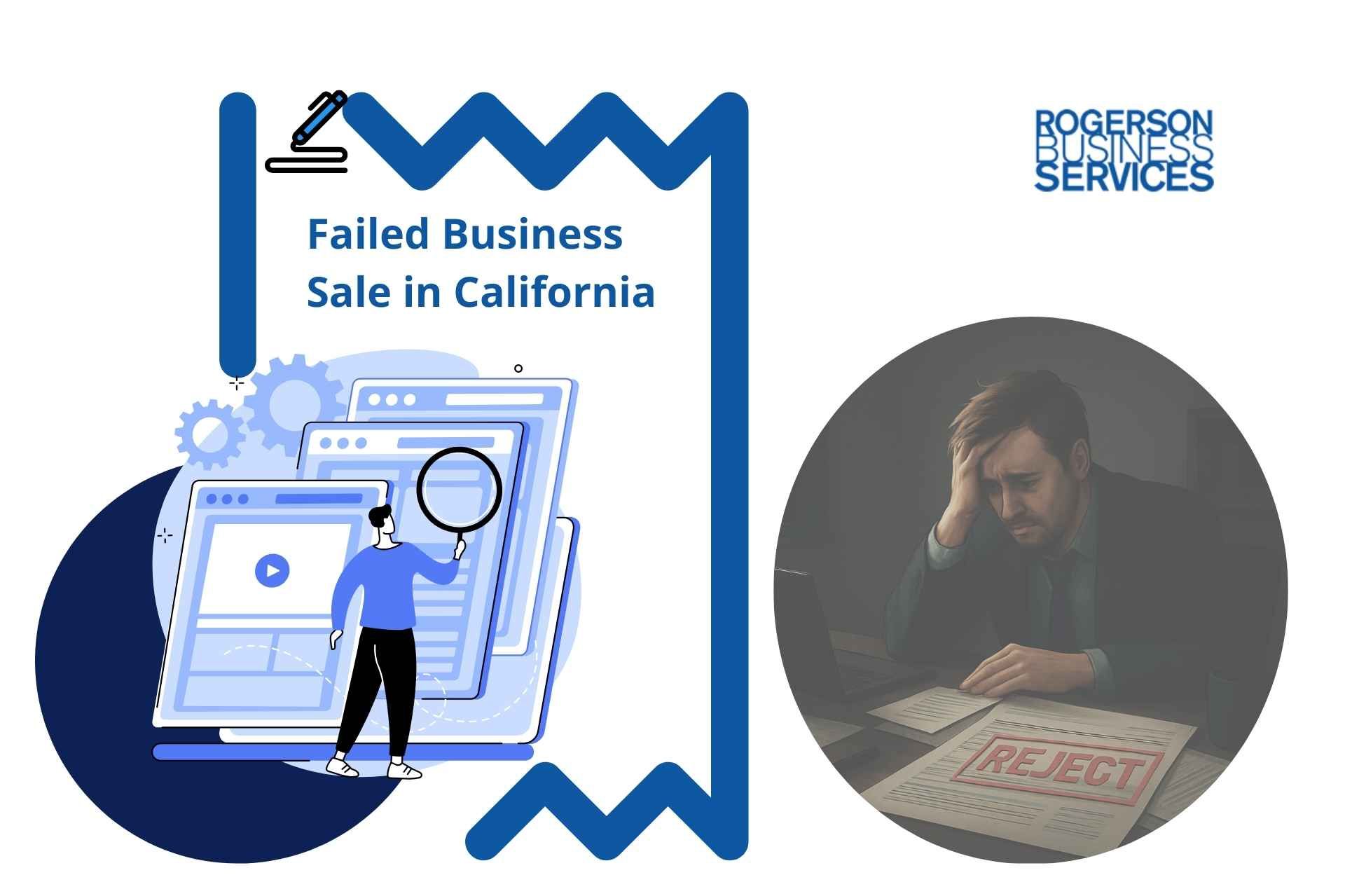Sell Side Due Diligence When Selling a Business
Sell Side Due Diligence

If you are a lower-middle-market business owner in California and looking to sell your business, here’s what you need to know about sell-side due diligence.
The Mergers and Acquisitions (M&A) environment is highly competitive and fast-paced. Buyers are looking to close deals fast and smoothly. This means deal makers are today more selective when buying businesses.
Due diligence as the seller can help prepare your business for the sale process. Middle market business owners understand the benefit of this strategy.
While due diligence was the forte for buyers, sellers now realize the benefits of preparing better as they enter sales contracts. The strategy fosters an efficient transaction while allowing you to have meaningful conversations with buyers about the business’ tax and financial matters.
But…
What is Sell-Side Due Diligence?
Sell-side due diligence is the identification and assessment of your business’ value. Diligence involves reviewing your business model, financials, processes, and management team before a sales transaction.
This self-auditing process also helps you identify issues as you look to value and sell your middle-market business in California. Baby boomer business owners carry out an in-depth analysis of key performance indicators, such as:
- Revenue
- Earnings Before Interest, Taxes, Depreciation, and Amortization (EBITDA)
- Production margins
- Working capital
- User base growth
- Customer acquisition costs
The evaluation may include IT, HR, cybersecurity, or tax assessments.
Sell-Side Due Diligence Process
Conducting seller-side due diligence is a critical component of the M&A transaction. However, the process can be lengthy and intimidating, usually involving multiple phases and parties.
The Sell-Side Due Diligence Process Flow
Here are the general steps for seller-side due diligence.
- Evaluate project goals—The first step involves delineating your corporate goals. This strategy will help you find the resources you need, and what you need to know and ensure you stay aligned with the overall business strategy.
- Analyze business financials—A comprehensive financial records audit that ensures documents in your Confidentiality Information Memorandum (CIM) are not fluff. Some items inspected in this step include balance sheets, inventory schedules, forecasts and projects, your short- and long-term debts, and valuation ratios compared to industry benchmarks and competitors.
- Thorough document inspection—Your organization and responsiveness are key to expediting evaluation documents. Information in the documents ensures you practice proper business practices and adherence to environmental and legal compliances.
- Business plan and model analysis—The target is your organization’s business plans and model. This phase assesses the viability of the documents and helps buyers evaluate how the current model will integrate with theirs.
- Offering information—Analysts use the information collected to carry out valuation methods and techniques. The step substantiates the last dollar you are asking for during a negotiation.
- Risk management—Use this step to examine your company holistically and forecast risks that come with the sale.
How to Use Due Diligence to Prepare the Business for Sale
The sale due diligence process can be more detailed and time-consuming than you had expected. There is a danger that you will not run the business effectively because of the due diligence requests coming in.
However, due diligence can help the sale of your business sail through in several ways, including:
- Keeping your business moving forward by setting targets and budgets the company must meet
- Maintaining a healthy financial position
- Analyzing the profit numbers by dissecting the data around gross profit by month, service line, customer, or product
- Offering warranties such as you filed tax returns on time to limit issues that may arise
- Centralizing key information and data for easy access
- Controlling the emotional impact of selling your business by answering the right questions
Sell-Side M&A
The primary sides to mergers and acquisitions are the buy-side and sell-side.
Sell-side organizations are looking to purchase securities, such as hedge funds. Sell-side entities sell the securities, such as investment banks.
Sell-side M&A organizations act as middlemen between buyers and corporations. They help bring securities to the buyers on behalf of businesses while offering valuations and analysis during the process.
Some steps to preparing sell-side M&A include:
- Preparation—Involves identifying the reason behind cashing out on a business. You can cash out to make money when there is no one to take over the business, to solve conflicts, or as a strategic move to merge with another business.
- Marketing—Selling your business will be a big change for everyone. Communicate and be transparent about the process.
- Buyer due diligence—The longest phase of the sell-side M&A process that ensures buyers cover their bases before closing the deal. Some common strategies include checking your financial history, analyzing the customer base, and analyzing your competition.
- Closing the deal—After the sell-side and buy-side agree, you will sign papers. The last step is announcing the sale through a joint press release.
The Sell-Side Due Diligence Report
Baby boomers selling their businesses to retire should have the ultimate sell-side due diligence report. The report concentrates on EBITDA, revenue, data, and metrics important to you and the investor.
Items in the report are:
- The executive summary
- Quality of earnings
- Business working capital
- The income statement
- Your balance sheet
- Supplemental analysis
The report should toe the line between highlighting your business’ most attractive aspects while offering quantitative, reliable insights that buyers will use during the decision-making process. Flatter yourself, but be authentic.
Also, use the report to show your business is unique and worthy of attention. However, finding the balance is difficult. So, you need a checklist.
Due Diligence Checklist for Selling a Business
A due diligence checklist organizes information about your business. Following the checklist helps you learn about your benefits, contracts, liabilities, assets, and potential issues.
You can arrange the checklist in a basic format but can change it to fit your industry. Most due diligence checklists have multiple categories:
- Business diligence
- The company financials
- Human resource (HR) data
- Product materials
- Tech stack supporting your product
- Customer data
- Legal diligence
- Corporate governance and structure
- Tax documentation
- Contracts
- Intellectual property
- Litigation and legal compliance
- Insurance
- Property
Sell-Side Advisors are Here to Help
A sell-side advisor can help you through the sell-side due diligence process and get the deal close on your terms. Hiring a team of advisors will also help you identify the critical market drivers potential buyers find attractive for a successful sales process.
If you have decided to value and then sell your lower middle market business now or within the next six to twelve months in California, click here to get started with this quick and simple form, or call Andrew Rogerson, Certified M&A Advisor, so we can understand your pain points better and prioritize your inquiry with Rogerson Business Services, RBS Advisors.
This is part of business owner tips to answer how Rogerson Business Services attract qualified buyers to sell your business series ->
Hey there! Can we send you a gift?
We just wanted to say hi and thanks for stopping by our little corner of the web. :) we'd love to offer you a cup of coffee/tea, but, alas, this is the Internet.
However, we think you'll love our email newsletter about building value and properly position your company before transition/exit your business ownership.
As a special welcome gift for subscribing, you'll also get our helping and educational guides, tips, tutorials, etc.. for free.
It's filled with the best practices for retiring serial business owners like Dan Gilbert, Larry Ellison, Warren Buffett, and many more.
Just sign up for our emails below.


